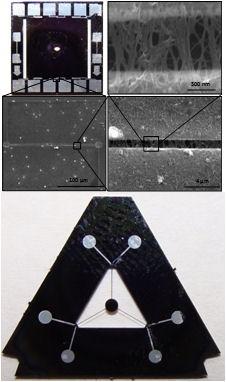
As mechanical devices move towards the nanoscale, smaller and more sensitive force and displacement sensors need to be developed. Currently, many biological, materials science, and nanomanufacturing applications could benefit from multi-axis micro- and nanoscale sensors with fine force and displacement resolutions. Unfortunately, such systems do not yet exist due to the limitations of traditional sensing techniques and fabrication procedures. Carbon nanotube-based (CNT) piezoresistive transducers offer the potential to overcome many of these limitations. Previous research has shown the potential for the use of CNTs in high resolution micro- and nanoscale sensing devices due to the high gauge factor and inherent size of CNTs. However, a better understanding of CNT-based piezoresistive sensors is needed in order to be able to design and engineer CNT-based sensor systems to take advantage of this potential. The purpose of this research is to take CNT-based strain sensors from the single element test structures that have been fabricated and turn them into precision sensor systems that can be used in micro- and nanoscale force and displacement transducers. In order to achieve this purpose and engineer high resolution CNT-based sensor systems, the design and manufacturing methods used to create CNT-based piezoresistive sensors were investigated. At the system level, a noise model was developed in order to be able to optimize the design of the sensor system. At the element level, a link was established between the structure of the CNT and its gauge factor using a theoretical model developed from quantum mechanics. This model was confirmed experimentally using CNT-based piezoresistive sensors integrated into a microfabricated test structure. At the device level, noise mitigation techniques including annealing and the use of a protective ceramic coating were investigated in order to reduce the noise in the sensor. From these investigations, best practices for the design and manufacturing of CNT-based piezoresistive sensors were established. Using these best practices, it is possible to increase the performance of CNT-based piezoresistive sensor systems by more than three orders of magnitude. These best practices were implemented in the design and fabrication of a multi-axis force sensor used to measure the adhesion force of an array of cells to the different material’s surfaces for the development of biomedical implants. This force sensor is capable of measuring forces in the z-axis as well as torques in the θx and θy axis. The range and resolution of the force sensor were determined to be 84 μN and 5.6 nN, respectively. This corresponds to a dynamic range of 83 dB, which closely matches the dynamic range predicted by the system noise model used to design the sensor. The accuracy of the force sensor is better than 1% over the device’s full range.